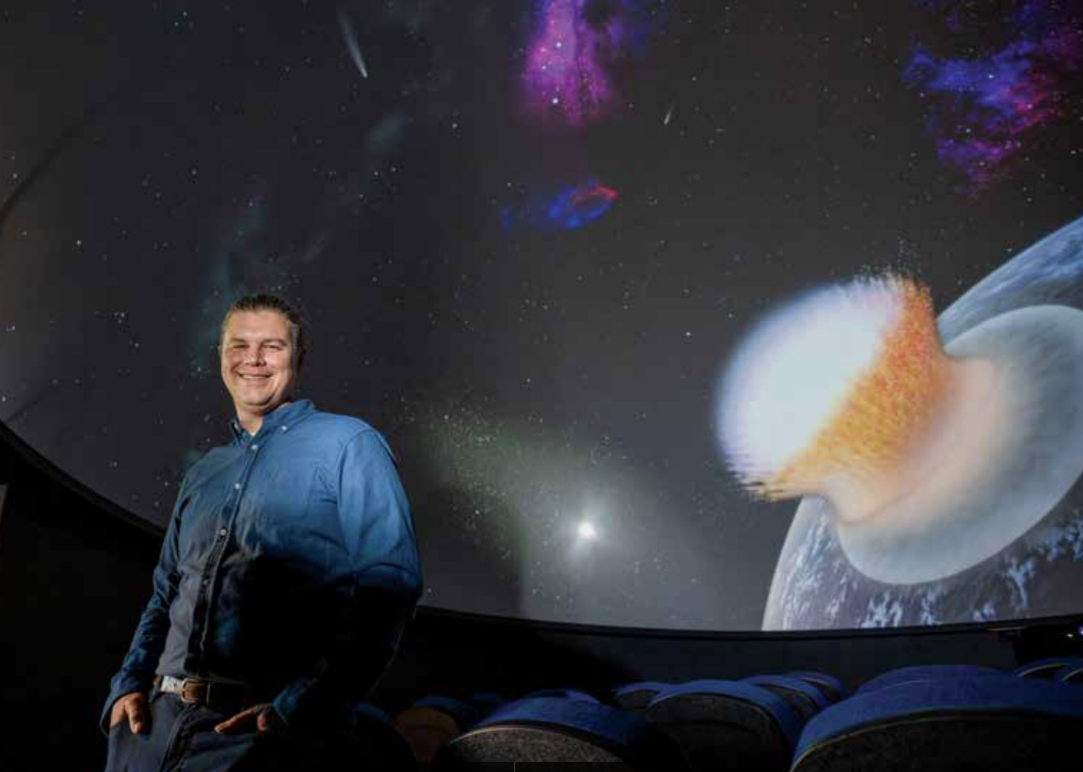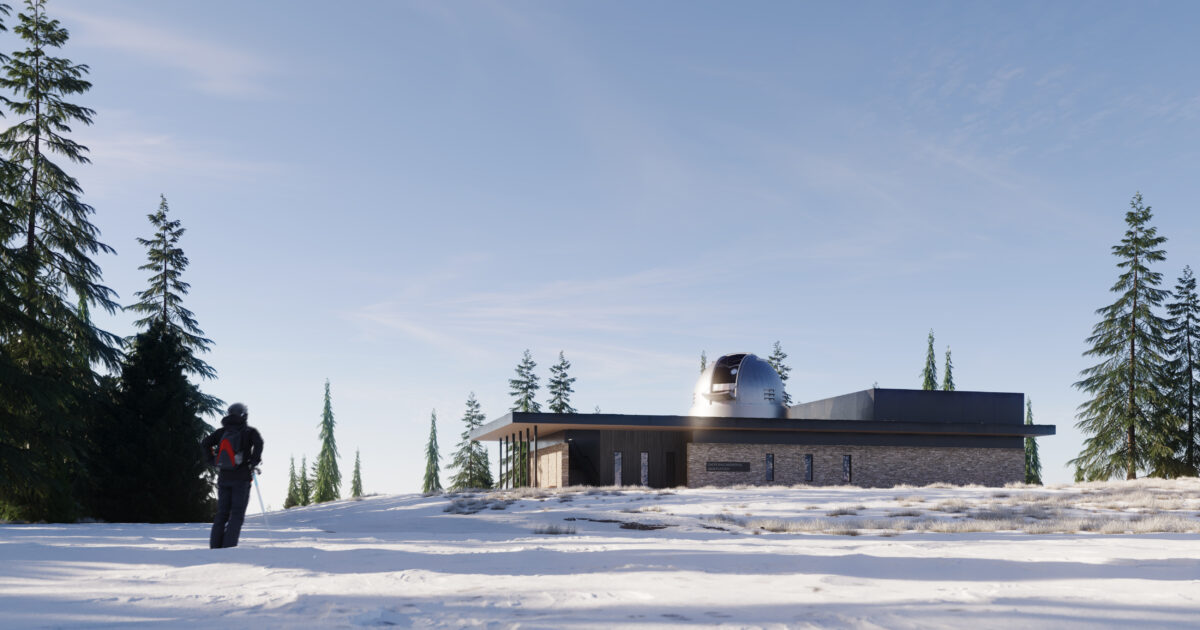
Meet the Snow King Observatory’s Director
Q&A with Joe Zartor, astronomer and director of the Snow King Observatory and Planetarium.
Snow King Mountain’s new Observatory and Planetarium is situated on the crest of the ridge atop the ski resort’s summit. It boasts a state-of-the-art facility with a large (1-meter) Plane Wave telescope available for public observation via on-site staff. The telescope rests on a 20-foot concrete pier anchored in the earth and isolated from the greater structure to prevent vibrations from disrupting its position. The 4,400-square-foot observatory features a 35-seat planetarium space theater and a 40-seat auditorium for group presentations and learning opportunities. Adjacent to the 24-foot dome is a rooftop observation deck where portable telescopes can be set up for additional viewing during astronomical events.
Astronomer Joe Zartor is the director of this unique and inspiring place. He received his MBA from Lehigh University in Pennsylvania before studying astronomy and planetary sciences at the University of Colorado-Boulder, where he graduated with his third degree. He worked at the university’s Fiske Planetarium as a senior presenter, leading planetarium shows, traveling to schools and the like. Additionally, he worked at CU-Boulder’s Laboratory for Atmospheric and Space Physics, which has a partnership with NASA,
In 2024, Joe and his family — including his young daughter, named appropriately, Aurora — moved from Boulder to Jackson.
Q: What is special about the 1-meter primary mirror Planewave telescope and can one use it day or night? What might one be able to view through the telescope?
A: There are very few “off the shelf” 1-meter telescopes in existence currently that pack a punch with the amazing technology provided by Planewave. The telescope can only be used at night, or the sun could damage the delicate optics. You can view nearly any astronomical body you want with the telescope if you take an extended exposure photo, or look at some of the closer objects in the night sky with our periscope and your eyesight.
Q: What is the Science On a Sphere exhibit?
A: NOAA’s Science On a Sphere® is a room-sized, global display system that projects visualizations of planetary data onto a 6-foot diameter sphere to help illustrate Earth System science to people of all ages.
Q: The astronomical displays, live presentations and immersive multimedia experiences — including the planetarium theater — sound fascinating. What are the specifics?
A: You have to come up to experience all the wonders of the facility. During the daytime, you can explore the building at your leisure and take in one or multiple planetarium shows or talks at some of the exhibits. During the evening, you can experience a guided stargazing experience where you look through a series of telescopes, including the Planewave telescope.
Q: Is it possible for someone to visit the observatory without a ticket, or is a Daytime Experience ticket necessary, and can one be purchased at the observatory, or only at the ticket office at the base of the mountain, or online?
A: You can purchase a ticket at the observatory, online, or at any ticket booth for day or nighttime experiences.
Q: What is the nighttime experience and please explain the difference between the “Evening Planetarium Show” and the “Night Experience.”

A: The evening planetarium show is part star talk in the planetarium dome and part full-dome movie. The idea was to combine the planetarium experience with dinner at Aurora, or an evening gondola ride to see the sunset. The Night Experience is primarily focused on stargazing through a series of telescopes.
Q: Do planetarium shows and educational programming rotate on a daily or monthly basis?
A: The shows change both daily and monthly and we are constantly introducing new programs.
Q: Do you have a favorite aspect of the observatory, or is everything special and a “must-do?”
A: Taking long exposure images with the Planewave telescope is a favorite to explore the wonders of the universe and the amazing software/hardware technology we have at the facility to make the images really come to life!
Q: Finally, what, in your opinion, is the coolest thing about the night sky?
A: How it changes every night! There’s always something new happening throughout each month of the year, such as comets, the aurora borealis and different planets to look at.

Costs:
In the summer, the Daytime Experience is $70 for adults and $55 for students (includes gondola ride); free for kids age 5 and under. The Nightime Experience costs $35 for adults and $30 for students, but does not include a free gondola ride; you must buy that separately. The Evening Experience is $60 for adults, $55 for students; free for ages 5 and under. The Ultra Observatory Night Experience costs $100 for adults and $75 for students; free for ages 5 and under.
There is similar programming in the winter, and the sky gets dark a lot earlier, so the night experience is easier for those folks who like to hit the bed early. Visit snowkingmountain.com for more information and tickets.
